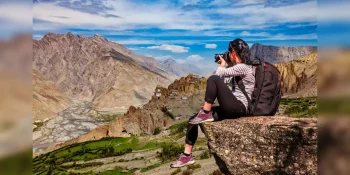Kaziranga National Park, located in the northeastern state of Assam, India, is a UNESCO World Heritage Site and one of the most significant wildlife sanctuaries in the world. Spanning an area of approximately 430 square kilometers, it is renowned for its remarkable biodiversity and, in particular, its conservation efforts for the endangered one-horned rhinoceros.
The park’s landscape is diverse, comprising vast stretches of marshland, tall elephant grass, dense forests, and numerous freshwater bodies. The mighty Brahmaputra River flows through the park, creating an ideal habitat for a wide array of flora and fauna. Kaziranga is home to over 2,200 Indian one-horned rhinoceroses, representing the largest population of this magnificent species in the world. The park also provides refuge to other iconic animals such as tigers, elephants, wild water buffaloes, swamp deer, and various species of birds.
One of the main reasons for the success of Kaziranga National Park’s conservation efforts is the strict protection measures implemented by the park authorities. The park is equipped with anti-poaching camps, patrolling teams, and a network of watchtowers to deter poachers and ensure the safety of the wildlife. The dedicated efforts of park rangers and forest officials have significantly contributed to the recovery and growth of the one-horned rhinoceros population.
The rich biodiversity of Kaziranga extends beyond the charismatic megafauna. The park boasts a staggering variety of plant species, including tall trees, shrubs, climbers, and numerous orchids. It is a paradise for nature enthusiasts and researchers, who can explore the diverse flora and fauna through guided tours and treks. The park’s wetlands are also home to a wide range of aquatic species, including the endangered Ganges River dolphin.
Kaziranga National Park has been a pioneer in implementing innovative conservation practices. One such initiative is the “Integrated Village Development Programme” that aims to involve the local communities in conservation efforts. Through this program, the park authorities provide sustainable livelihood options to the villagers residing in the fringe areas of the park, reducing their dependence on forest resources and mitigating human-wildlife conflicts.
Visitors to Kaziranga have the opportunity to witness the remarkable wildlife through organized jeep safaris and elephant rides. These guided tours provide a chance to observe the animals up close while ensuring minimal disturbance to their natural habitats. The park also has several observation towers strategically located, offering panoramic views of the wilderness and enabling visitors to spot animals in their natural surroundings.
However, Kaziranga National Park faces numerous challenges in its conservation endeavors. Encroachment, habitat loss, and the threat of poaching continue to pose significant risks to the wildlife and their habitat. Moreover, the park is vulnerable to annual floods caused by the Brahmaputra River, which lead to the displacement of animals and disruption of their ecological balance. Efforts are underway to address these challenges through community engagement, scientific research, and improved infrastructure.
In conclusion, Kaziranga National Park is a conservation success story and a testament to the remarkable efforts made to protect and preserve biodiversity. Its unique ecosystem, encompassing a wide range of wildlife and vegetation, makes it a globally significant natural heritage site. The park serves as a symbol of hope for wildlife conservation and exemplifies the importance of sustainable practices and community involvement in safeguarding our natural treasures for future generations.









